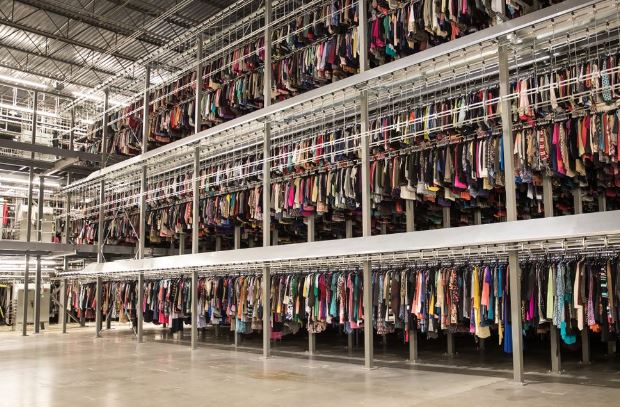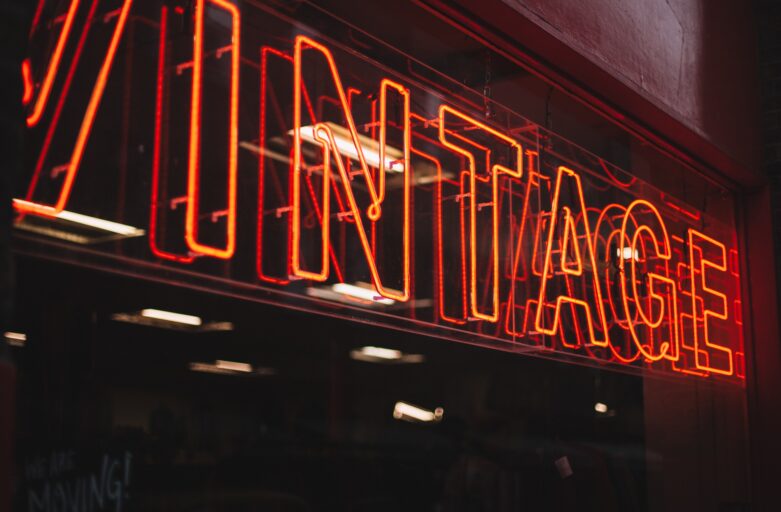Used goods have many names – secondhand, reclaimed, thrifted, pre-owned, refurbished, new-to-me, new-to-you, or my personal favorite, pre-loved. In the past, the terms like “used,” “secondhand,” or “thrifted” carried with them a negative connotation, both regarding the good as well as the buyer. Secondhand shopping used to signal a lower social status or an implication that one “wasn’t cool enough.” But the growth of the resale market shows that the stigma around secondhand shopping is lifting.
From humble beginnings…
Buying and selling used goods has been around for over a hundred years. The Salvation Army opened its first thrift shop in 1897 and Goodwill opened its first shop in 1904. Over the course of the 20th century, historic events – the economic hardship of the Great Depression, the lack of raw materials during both World Wars – proved thrift stores to be a much-needed resource. Thrift stores were a beacon of affordability.
Cut to today, most secondhand shoppers still claim their motivation is driven by price. We are, in fact, going through our own historical event – a teetering economy in the aftermath of a global pandemic. So the necessity of saving money and making supplementary income comes as no surprise.
But the drivers of secondhand shopping now go beyond our wallets. Consumers are leaning more towards a value mindset. They are realizing the amount of over-production, over-consumption, and waste that exists in out capitalistic world. The “re-commerce” market provides an alternative, a refreshing outlet for our waste, that breathes new life into what would have been considered unwanted.
Last year, Mercari, an online resale platform, issued it’s “Reuse Report” in conjunction with Global Data. In the report, Neil Saunders, the managing director of GlobalData, claimed that in the previous year, “some 1.6 billion functional, saleable items were thrown into the trash, which is neither sustainable nor financially savvy.”
The report also estimated that American households were sitting on $580 billion worth of products (or 23.6 billion items) they no longer use. That brakes out to about $4,517 or 184 items per household. Without the secondhand market, all that would probably just end up in the landfill when they could still be providing value. But this statistic shows that there is untapped economical and sustainable potential amongst our own possessions.
…to massive growth!
The advent of the internet helped shape the secondhand market into its flourishing state. With so many options for online sales, the accessibility of secondhand items has improved greatly. The domain of secondhand shopping expanded from brick-and-mortar charity shops (like Salvation Army and Goodwill) to the convenience of in-home shopping (via platforms like Mercari, OfferUp, Meta Marketplace, and eBay). Individual consumers became empowered to take their slice of the pie, cutting out the middle men and selling directly to each other.
A more recent study conducted in May by resale platform, OfferUp, evaluated the resale market as poised to reach $178 billion in sales this year. Furthermore, 82% of American’s are already engaging in buying and selling used goods. What was once a niche market, associated with lower incomes, is now booming with no signs of slowing down. In their report, OfferUp stated that it expects the market to grow to $289 billion in sales by 2027.
Now just focus on clothes. The “pre-loved” clothing industry is hugely successful in its own right. ThredUp, a large online marketplace of secondhand clothing and accessories, conducted a study regarding the secondhand market. Their report stated that they expect re-commerce companies, like itself, Poshmark, and the RealReal, to comprise almost 20% of the whole clothing industry by 2031. ThredUp also estimates that its US secondhand market will reach $82 billion by 2026.
From stigma, to trendy, to normalized.
Other retailers want “in” on the action
It started in 2019, when big department stores, J.C. Penney and Macy’s, partnered with ThredUp to sell ThredUp’s secondhand inventory at some of their store locations. Then in 2021, brands such as Urban Outfitters, Nike, Gap, Levi Strauss, and Lululemon, launched their own secondhand retail programs. This year, Target and Fabletics capitalized on ThredUp’s growth by joining forces with the consignment giant to implement their resale programs.
ThredUp understands that the trend of secondhand fashion is more than just a trend. It understands that consumer mindsets are changing, especially among Millenial and Gen Z shoppers, who want to do better for the environment. Trailblazing further, the company has opened its platform to allow large-scale name brands to sell and connect to its audience of re-commerce enthusiasts. This move positions the company as more of an ally than a competitor, a pivot from traditional capitalist competition and a chance for secondhand retail to make a greater name for itself.

So long, Secondhand Stigma
The growth and size of secondhand shopping indicates that used goods are no longer gauche but are now mainstream. For common everyday items (like electronics, tools, cars, etc), re-commerce provides economical value. For items that are tied more to self-expression (like clothes, shoes, and home furnishings), re-commerce provides social value. Owning vintage clothes or furniture – pieces that represent a little history or nostalgia – has become chic. Scoring a bargain on gently used fashion or a sleek mid-century table is now laudable, not embarrassment inducing.
Secondhand shopping is trendy.
Personally, I get excited when I buy something pre-loved for my home or my closet. And that excitement doubles when people give me compliments. And when I tell them where it’s from? Now triple the excitement! In other instances where I say it’s from known retailer – they just nod, make a mental note, and move on. But when I get to say that I got it secondhand – I always notice a little surprise and intrigue on their faces. It makes me feel like I have a one-of-a-kind (even though it probably isn’t) because it won’t be easy to find the same thing again.
As much fun as I have sharing my secondhand finds, I hope that the intrigue fades away. Why? Because that would mean that secondhand shopping has become as commonplace as going to the grocery store. Nothing novel or noteworthy, just a normal facet of everyday life. That would be the dream.
From stigma, to trendy, to normalized.
Secondhand Shopping: Good for You, Good for Planet
Aside from saving money, making money, and being on-trend, there are a few other benefits to secondhand shopping.
It fosters community. Online resale social groups allow for easy negotiation and communication between buyer and seller. This makes for a more personal transaction than the simple swipe of a credit card. Regarding the OG charity stores, often times their proceeds end up benefiting the community by funding other helpful programs.
It’s not restrictive based on social class or status. Both low end goods and high end designer goods are available for resale at various consignment shops. Re-commerce can therefore, be a commonality not a divider, as so many things are these days.
It can foster more joy in your purchases. When it comes to the self-expression items, the purchases that took time and patience are more likely to hold more sentimental value that the “new” purchases made out of convenience. Think of the emotions of a collector upon finding the right item versus a shopper at the mall.
And last but not least, secondhand shopping is more environmentally sustainable. It diverts usable, functional goods away from landfill. And it reduces the need for overproduction and resource depletion from the continued creation of new products.
Saunders from Mercari affirmed, “More people are now engaging in the reuse ecosystem and are finding the experience enjoyable.”
So give secondhand shopping a try. Who knows? You might find something pretty cool or at least you’ll save enough money to buy that other new cool thing you wanted.
References
Retail Dive:
https://www.retaildive.com/news/jc-penney-follows-macys-in-offering-used-apparel-from-thredup/560983/
https://www.retaildive.com/news/secondhand-market-reach-82b-2026-thredup/624123/
https://www.retaildive.com/news/poshmark-lets-big-brands-sell-on-its-platform/608987/
Chain Store Age https://chainstoreage.com/study-americans-spend-160-billion-secondhand-items-2021
CNN https://www.cnn.com/2022/08/30/business/offerup-resale-report

